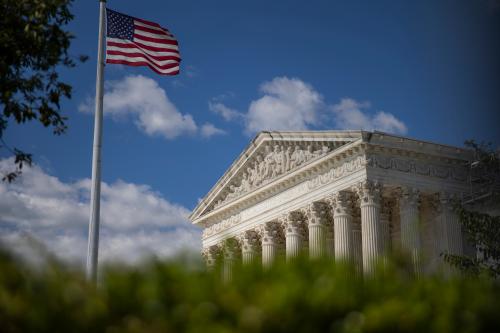Executive Summary
Public confidence in charities is key in guaranteeing a vibrant future for treating and solving the world’s most important problems. Public confidence affects charitable giving and volunteering, employee recruitment, and gives charities the freedom to dedicate resources toward their most important programs and capacity-building priorities.
Unfortunately, public confidence in charities remains at contemporary lows. Driven downward significantly by the controversies surrounding the sluggish disbursement of the American Red Cross Liberty Fund, confidence has yet to recover. The percentage of Americans who said they had “a lot” of confidence in charitable organizations dropped from 25 percent in July 2001 to 18 percent in May 2002. The percentage that reported having “none at all” rose from 8 percent in 2001 to 17 percent 2002.
A March 2008 survey conducted on behalf of the Organizational Performance Initiative at New York University’s Robert F. Wagner Graduate School of Public Service shows four patterns that should worry charitable organizations and sector leaders.
1. Charitable confidence has not risen significantly since it hit bottom in 2003. As of September 2002, 37 percent of Americans reported having “not too much” confidence in charitable organizations or “none at all.” As of March 2008, 34 percent gave the same rating, a figure that is well within the ±3 percent margin of error in both surveys.
2. Americans remain skeptical of charitable performance. Only 10 percent of the Americans interviewed in March 2003 said charitable organizations did a “very good job” spending money wisely; 17 percent gave the same rating to running programs and services, and being fair in decisions; and 25 percent gave the same rating to helping people. In other words, a vast majority of Americans rated charitable performance on these four tasks as either “somewhat,” “not too good,” or “not good at all,” hardly a stunning endorsement.
3. The considerable drop in the ratings of helping people poses a serious challenge to the sector’s distinctiveness as a destination for giving and volunteering. As of October 2003, 34 percent of Americans said charitable organizations did “very good” in helping people; in March 2008, only 25 percent gave that same rating. This statistically significant drop is the most troubling finding in the survey.
4. Estimates of charitable waste remain disturbingly high. As of March 2008, 70 percent of Americans said that charitable organizations waste “a great deal” or “fair amount” of money. This figure has risen 10 percentage points since October 2003. Although Americans estimate that big business and government waste even more money, charitable organizations seem bound and determined to catch up.








